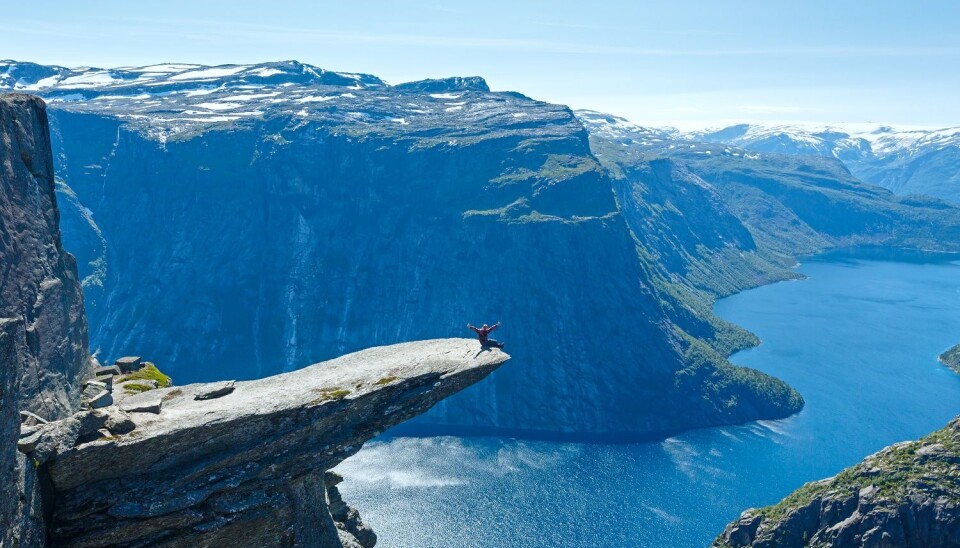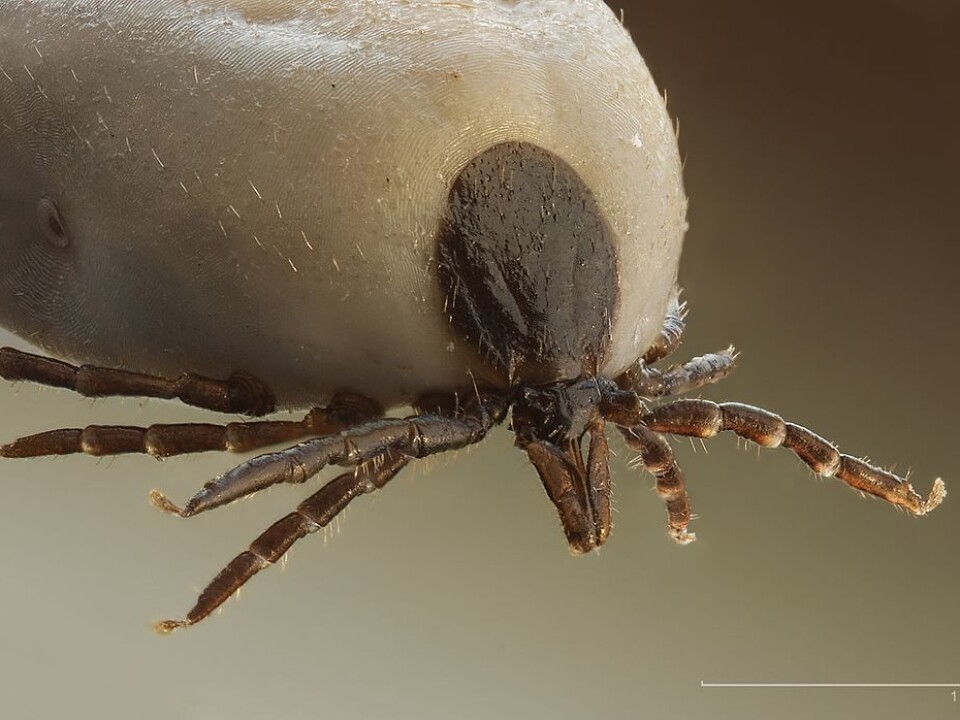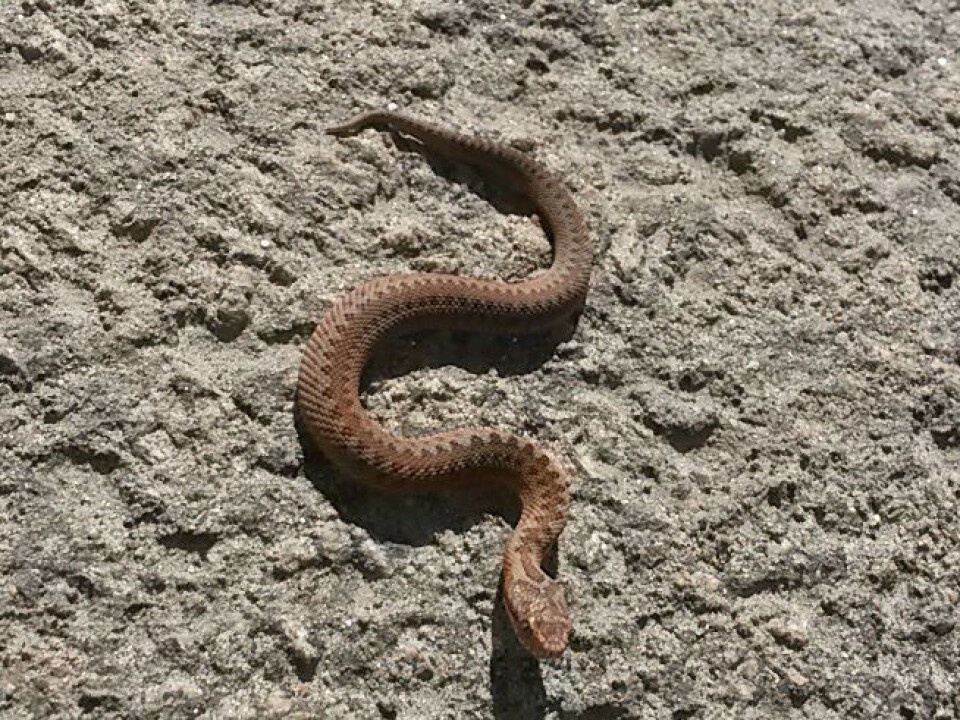An article from Norwegian University of Life Sciences (NMBU)

Researchers’ top tips for tourists in Norway
Many tourists are unprepared when heading out on various excursions in Norway. Here are a few tips to help you prepare for your trip.
If you venture out on one of the many stunning or cosy classical excursions available in Norwegian nature, you better pay heed to that old Scout-motto of being well prepared – no matter if it is trekking in the mountains, hiking in the forests or going on a glacier tour.
Here are some tips from Norwegian researchers on how you can best prepare for Norway’s nature and wildlife.
Tourists make mistakes
"We pay close attention to the development of nature-based tourism in Norway and have observed that there are equipment and expertise challenges. In recent years we have seen this at some of our major nature attractions such as Preikestolen (Pulpit Rock) at Lysefjord and Trolltunga (Troll tounge) near Tyssedal," Knut Fossgard says. He is a researcher in the research group «Nature based tourism» at The Norwegian University of Life Sciences (NMBU).
“Unfortunately, we have seen tourists make mistakes regarding clothing, equipment and general knowledge about hiking in rugged terrain. In addition, the weather in Norway may change quickly and in many places the terrain is demanding,» Fossgard contiunes.

A NMBU-masters degree student studying nature based tourism, Peter Fredheim Oma, is currently writing a masters thesis on the risks associated with hiking to Trolltunga, one of the most spectacular scenic cliffs in Norway.
According to Fjordnorway.com: "Trolltunga is situated about 1100 meters above sea level, hovering 700 metres above lake Ringedalsvatnet.The hike takes 10-12 hours (23 km in total to Trolltunga and return) and the ascent is about 900 meters. It is a long and hard hike."
Oma told Bergens Tidende (in Norwegian) that he found many tourists did not have any experience at all, and did not realize how demanding it is to walk 23 km to and from Trolltunga in rugged Norwegian terrain.
However, not all tours and hikes in Norway are that demanding or require much expertise in packing.

«An increasing number of trails in Norway will also be marked by the new labelling system where colour codes indicate difficulty,» says Fossgard.
However, there is also a fair chance of running into Norway’s fauna when you’re out hiking. What should you prepare for?
Ticks a bigger threat than polar bears
Foreigners might associate Norway with polar bears and fear meeting wild polar bears while out walking.
However, if you read Norwegian newspapers you will soon realise that ticks are considered a much bigger threat than polar bears in most of Norway.
In contrast to the polar bear, a threat subject to extensive coverage by Norwegian media each summer is a tiny little creature which mostly goes unnoticed unless it attaches itself to man or one of his pets.
Ticks are small spiderlike mites (arachnids) that bite into your skin and draw blood – and sometimes transmit dangerous infections in the process.
Tick-borne diseases
Ticks can spread Lyme disease (Borreliosis), Tick-borne encephalitis (TBE), a viral infectious disease involving the central nervous system which most often manifests as meningitis, encephalitis or meningoencephalitis - or Anaplasmosis, an illness caused by the bacterium Anaplasma phagocytophilium that can be serious or even fatal if not treated correctly.
Several tick species have been found in Norway, and they are mainly found along the coast of southern Norway up to Brønnøysund, especially in areas were deer are located.
The main species is Ixodes ricinus, which is mainly active from April to November.
"If you travel in such as areas, the best advice to avoid tick-borne infections is to remove the tick within 24 hours of attachment, i.e. look for ticks every evening and remove the attached species,” explains Professor Snorre Stuen at The Norwegian University of Life Sciences (NMBU), an expert on ticks and tick-borne diseases.
“However, TBE-virus could be transmitted earlier, but this infection is mainly found in southern p1arts Norway. You can also use insect repellents, but they only last for a few hours. If possible, you should avoid camping in an area with rich vegetation and high deer density," he continues.
Should you get a red ring in the skin around the area of a tick bite which is more than 5 cm in diameter, or you get flu-like symptoms 1-2 weeks after a tick bite, you should seek medical advice.
Wasps, mosquitoes and other insects
Other insects people sometimes worry about in Norwegian nature are wasps and mosquitoes, but compared to the threat of ticks and tick-borne diseases they are not really anything to worry about unless you are allergic to wasp stings.
«It is worth emphasizing that mosquitoes in Norway do not transmit any diseases. They can be irritating, but they are not dangerous. If you are worried about mosquito bites, you can apply a repellent on your clothes or skin. Wasp stings can hurt, but they are not dangerous - except for the few people who are allergic to them,» says Anne Sverdrup-Thygeson, a professor in conservation biology at NMBU.
However, it is worth taking care that you do not incidentally swallow a wasp while eating outside - as stings in the mouth or throat can lead to potentially dangerous swelling.
If you are stung inside the mouth or throat, or in another sensitive area such as close to the eye, nostril or ear you need to seek medical attention even if you are not allergic.
Snakes
The only venomous snake in Norway is the Common European viper or adder. Even though it is venomous, its bites are not often serious and rarely deadly – but you should seek immediate medical attention if you are bitten by one.
"If you encounter an adder you should really just leave it alone. It is afraid of big creatures such as human beings. It may wheeze to get us to keep our distance, but the best thing to do is really just to walk away. It is an animal one should have respect for, and some people are allergic to its poison," says Vidar Selås, Professor in ecology and natural resource management at NMBU.
"If it is a full grown viper and you have to remove it, e.g. from just outside the cabin you are staying in with your family, you can lift it by its tail and carry it away. Of the three snakes you can encounter in Norwegian nature, the non-venomous grass snake and smooth snake can still bite you if you lift them by their tales, but a full grown viper won’t manage to - however, a baby viper will," continues Selås.
Elks and bears
"Norwegian elk are less aggressive than North American ones, where the moose is considered an animal one should watch out for. But even in Norway elk attacking humans do occasionally occur. These are mainly attacks of a short duration where the elk will kick with its front legs. A sign that the moose is aggressive is if it flattens its ears against its head and its neck hair bristle. Those are signs you should withdraw quietly the same way you came from," says Leif Egil Loe, Professor in wildlife ecology and management at NMBU.
But overall, encountering elk in Norwegian nature involves very little risk and is a sight that should be enjoyed, not feared.
Norway also has a small population of brown bears, but «A hiker or berry picker has little reason to fear bears. The bear will do what it can to ensure that people do not discover it. And when it senses that it has been detected, it will most likely run away as fast as it can,» NMBU-researcher Ole-Gunnar Støen recently told VG.
Overall, wild animals you can encounter in Norwegian nature, such as elk or bear, would rather avoid human beings if possible.
Dangerous situations are rare, and can primarily occur if you surprise the animal in a way that it feels threatened – or if you provoke it. If in addition you make noise to signal your presence, animals such as wolves, elk and bear will do their best to avoid you.
More helpfull tips:
Labelling system with colour codes indicate difficulty
Packing lists from The Norwegian Trekking Association






























